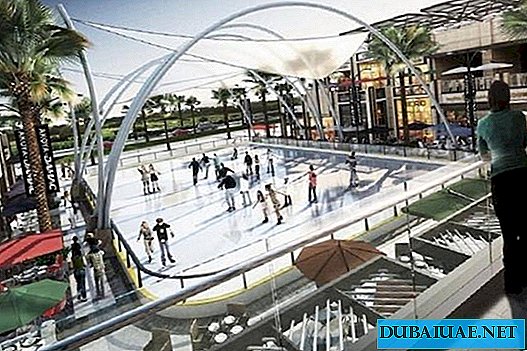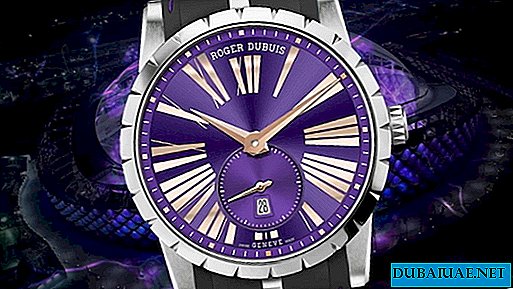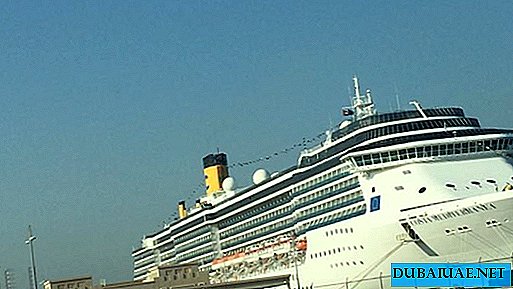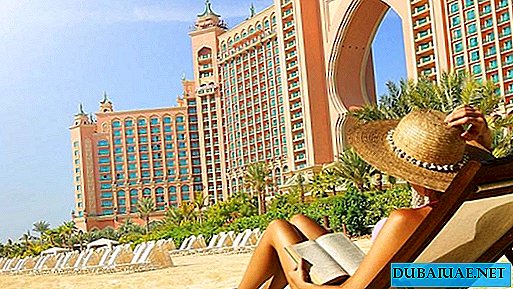And around all this triumph of man over nature, on the horizon, in the proud majesty of unspoilt, red-orange desert dunes will rise. Emirates The world of artificial gardens and the constant struggle of man with the desert. If you climb a bird's-eye view, you will see that the man conquered from the desert - these are just small green dots on a huge orange carpet. A huge, almost dead desert, that is what the United Arab Emirates is.
Great Sand Desert
Many mistakenly call it the Arabian desert, but this is not true. In fact, the Arabian desert is a place in Central and Upper Egypt, between 29 ° and 27 ° C. sh., the Nile and the Red Sea. And the local Emirate desert bears the name of Rub al-Khali. I doubt that this name is widely known to many of our tourists, and to the inhabitants of the Emirates themselves.
What do we know about the Emirate desert with the name of Rub al-Khali? Rub al-Khali is one of the largest deserts in the world. Its area is 650,000 km ?. This desert is located between 44 ° 30 'and 56 ° 30' in. d., 16 ° 30 'and 23 ° 00' s. w. in the countries of Saudi Arabia, Oman, the United Arab Emirates and Yemen, which is larger than the area of France, Belgium and the Netherlands combined.
Rub al-Khali is a sedimentary basin stretched from southwest to northeast through the Arabian shelf. Sand lies on top of gravel or gypsum, the height of the dunes reaches 250 meters. The sand here is mostly silicate, from 80 to 90% is quartz, the rest is feldspar, the particles of which, coated with iron oxide, color the sands in orange and red. In Rub al-Khali mobile sands, forming dunes, prevail. Vegetation is rather rare here - hodgepodge, camel thorn. In the east of the desert are salt deposits.
What is known about the past of this desert? The fact that the Arabian Peninsula millions of years ago was covered with tropical forests and full rivers flowed through it. And also the fact that even earlier the surface of the Arabian Peninsula was the bottom of the ocean. There are no other information about this desert in publicly available sources. Dry, brief and dead. Like the desert itself. But is she so dead?
Does the desert have a chance to become a tropical garden again? Does she have a chance to come to life? I think yes. What separates the dead land of the Emirates from the lush rainforests? Right! There is no natural irrigation. There is simply no rain. Of the millions of UAE travel guides, it is known: Emirates is a country of 360 sunny days a year. Just think, 360 days without a drop of life-giving moisture. That's why there is a desert.
But is it really so? Is it important that only because of the sun is dead sand the only cover of this earth? Not. After all, there are desert plants that have enough atmospheric moisture. But why aren't they even so common in the local desert? And another answer appears. The sands of Rub al-Khali are moving sands. The constant blowing of sand prevents the majority of sprouts, which manage to hatch in the season of short winter rains, to take root. And some years have been here completely dry. So two main reasons were discovered why the local desert is dead in most of its area. The rainy season in it is short to impossibility, and what has time to hatch cannot take root due to the winds.
Every spring, mainly in late March and early April, we observe how the margins of local desert roads are covered with rare greenery, which pleases the eye until mid-May, and turns into dust during the week with the first emirate summer heat. The green world is trying to be born in the desert every spring. And every time he dies. This went on from year to year, for many decades, hundreds of years, thousands of years. And suddenly, this year something broke ...
 This year, the Emirates received a long rainy season as a present. Not as heavy rain as it was in the Emirates at the turn of 1996 and 1997, but a much more rainy season. Rains began in November 2008 and began to irrigate the desert with the regularity of a refueling gardener. Everything in the desert woke up. All seeds, dropped and not able to sprout in past years, grabbed with their first rains their chance to take root and survive the inevitable heat of summer. Only the sprouts began to wilt because the water of the last rain completely dried up, as nature gave the Emirates the next and another rainfall. Desert plants got the opportunity to grow to such an extent that the root system managed to get to the deep layers where moisture is retained, and the leaves have grown to the size that morning winter fogs allowed the dew flowing under the roots of the plants to settle on them. The desert bloomed. The mechanism, which with the regularity of the clock with the pendulum, took the life of local plants, broke this winter.
This year, the Emirates received a long rainy season as a present. Not as heavy rain as it was in the Emirates at the turn of 1996 and 1997, but a much more rainy season. Rains began in November 2008 and began to irrigate the desert with the regularity of a refueling gardener. Everything in the desert woke up. All seeds, dropped and not able to sprout in past years, grabbed with their first rains their chance to take root and survive the inevitable heat of summer. Only the sprouts began to wilt because the water of the last rain completely dried up, as nature gave the Emirates the next and another rainfall. Desert plants got the opportunity to grow to such an extent that the root system managed to get to the deep layers where moisture is retained, and the leaves have grown to the size that morning winter fogs allowed the dew flowing under the roots of the plants to settle on them. The desert bloomed. The mechanism, which with the regularity of the clock with the pendulum, took the life of local plants, broke this winter.
Everyone noticed it. This was striking, and something happened that none of the foreigners living here over the past decades have ever observed. The desert from orange began to turn into green. This became a sensation - akin to a comet or solar eclipse. This happens once in a lifetime.
And I get it. This event could not be missed, so as not to explore it, not to capture. I love the Emirates so much that an event such as the revitalization of the desert cannot but excite me. Emirates is an oasis created by human hands. And always, being here, you feel that only the persistence of a person makes this land suitable for life. But when you see that this blessed land has a natural chance to become a green paradise, even if it is very small, then joy fills the soul.
The same feeling of happiness that occurs in the spring somewhere in the Kursk Forest, when everything begins to wake up from a winter cold, and snowdrops appear on the first thawed patches.
Realizing this, I did not hesitate, and, having gathered friends, I went out into the desert. I expected to see green stripes in the lowlands and a sparse green shoot on the sand slopes. However, what we saw shocked and fascinated. But I'm getting ahead of myself ...
I'll start in order. January 26, 2009, in the morning, at about 10 o’clock, we moved off-road in the direction of the emirate of Ras Al Khaimah on the Emirates Road. Before reaching the turn into the city, we moved onto a new road leading to the next free economic zone. After 200 meters, we snuggled to the side of the road and stopped.
It seemed to us that we discovered the "Sannikov Land." A green desert stretched from the road to the horizon ... What a desert! Green hills and meadows stretched to the horizon, on which bushes and groves were scattered. It was not an oasis. I remembered this place from last spring. I drove past him once a week from February to May, but there was simply no greenery here! This could not be, because it could never be! Like a dream! But it was not a dream.
We stood on the side of the road, and almost alpine meadows went from our feet to the horizon. And only the "bald" crests of the dunes showed that just yesterday it was an ordinary desert.
Having enjoyed ourselves enough, we found a congress and went down to this valley. All of it was strewn with traces of cars, and it was clear that where they drove, the grass cover was torn off, and under it was ordinary red sand. We did not begin to injure the earth with new scars and began to ride on someone else's rut. There were a lot of them. We delved into the desert at a distance of about 10 kilometers, and only then did the greenery begin to thin. In the end, the desert began to resemble an ordinary Emirate desert. Bare dunes and the absence of any vegetation. The zone of moving sands began. A zone of sand that has not yet managed to capture local plants.
 We turned in the opposite direction, found a small green grove and camped near it. Where we ended up was not a desert, in the usual sense of the word. It was not an oasis, there was no source of water. It was something new. Hitherto unprecedented. The area around us was painfully similar to the hilly Ukrainian steppes on a May morning. Unknown, but very familiar flowers bloomed around us. Entire glades of flowers - white, red, pink. Flocks of birds chirped in the crowns of the trees, and camels roamed around the neighboring groves. Here and there we saw the same camps as ours. Apparently, the desire to enjoy an unprecedented phenomenon - landscaped in the desert, was not only ours. Hundreds of other families have followed this call. They, like us, were there until late at night. We went home, and many stayed overnight. And it was clear why. As soon as the sun began to set, the air was filled with aromas of all kinds of flowers and plants. Probably blooming at night, like violets. It smelled of flowers and hay, fog and damp. It smelled like a living forest. Bonfires of visitors lit up in the valley, it was filled with aromas of smoke. It was impossible to combine the realization that we, in fact, are in the desert and at the same time in strange, impossibly beautiful meadows.
We turned in the opposite direction, found a small green grove and camped near it. Where we ended up was not a desert, in the usual sense of the word. It was not an oasis, there was no source of water. It was something new. Hitherto unprecedented. The area around us was painfully similar to the hilly Ukrainian steppes on a May morning. Unknown, but very familiar flowers bloomed around us. Entire glades of flowers - white, red, pink. Flocks of birds chirped in the crowns of the trees, and camels roamed around the neighboring groves. Here and there we saw the same camps as ours. Apparently, the desire to enjoy an unprecedented phenomenon - landscaped in the desert, was not only ours. Hundreds of other families have followed this call. They, like us, were there until late at night. We went home, and many stayed overnight. And it was clear why. As soon as the sun began to set, the air was filled with aromas of all kinds of flowers and plants. Probably blooming at night, like violets. It smelled of flowers and hay, fog and damp. It smelled like a living forest. Bonfires of visitors lit up in the valley, it was filled with aromas of smoke. It was impossible to combine the realization that we, in fact, are in the desert and at the same time in strange, impossibly beautiful meadows.
As soon as the sun had completely set and the deep night fell, cold came down from the sky. If during the day it was about 24-26 degrees of heat, then at night the temperature dropped to + 13 degrees. And, somehow, she instantly fell. All cars were covered with drops of water. Humidity and low temperature did their job - fog descended into the valley and began to feed all the plants with additional moisture from the air. If we had perfect hearing, then we would probably hear at that moment how dew drops fall and how the grass grows. But we had little time left. So much we were stunned by our discovery. And we left, breaking the darkness of the night with the headlights of cars.
Since then, I have visited that valley three more times. It had not rained for more than a week. On my last visit, three days ago, I noticed that the sand was very dry after the last rain, and the grass began to fade in some places. Green fields have a brownish tint. I thought - the desert takes its toll. What a pity that this green miracle is coming to a logical end. And on that very evening the rain fell again ....
Something broke this year in the Rub al-Khali desert. Or maybe quite the opposite? Maybe the ancient mechanism starts working again? The one that supported the lush greenery of this peninsula 65 million years ago, and then broke down for unknown reasons? What if we are witnesses to the beginning that will return to these lands natural irrigation and landscaping? What if the first foci of the greening desert are not a unique phenomenon, but the beginning of a new era in the history of the Emirates? After all, no one yet knows what awaits the Arabian lands in connection with global warming. Then it will not be surprising that global warming on the planet will become the impetus for such climate change as regular rains in the Emirates. Moreover, regular annually. It is possible that already in the next decades we will witness the natural revival of these lands.
It is clear that complete landscaping of the desert will be a very long-term process. But the fact that green spaces will be able to win their own in the Emirates, without special irrigation systems and painstaking labor of human hands, now does not look like such a fantastic assumption. And we will have to think about the chance of desert revival more than once. I noticed that the green cover is still very, very thin. There is practically no fertile soil layer. And even a trace from the car, for many years, can kill all the living growth with its own track. Just like this happens in the tundra. Only with the difference that instead of the destructive sun there is destructive ice. But even there the same thin and difficult to restore soil. I think that the revival of the green cover of the Emirate desert in a natural way has a chance. But man does not have power over these processes, and we can only enjoy this rare event.
Gather with friends and ride with experienced guides to the desert while the summer is far away. Then it will be too late.












